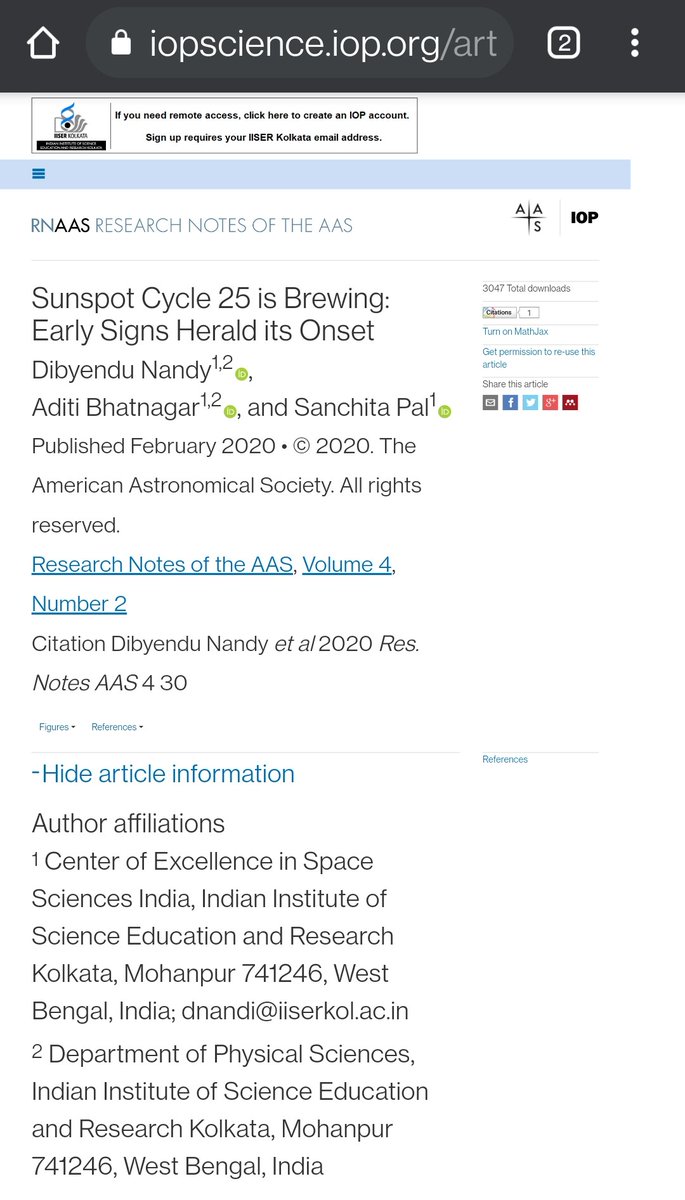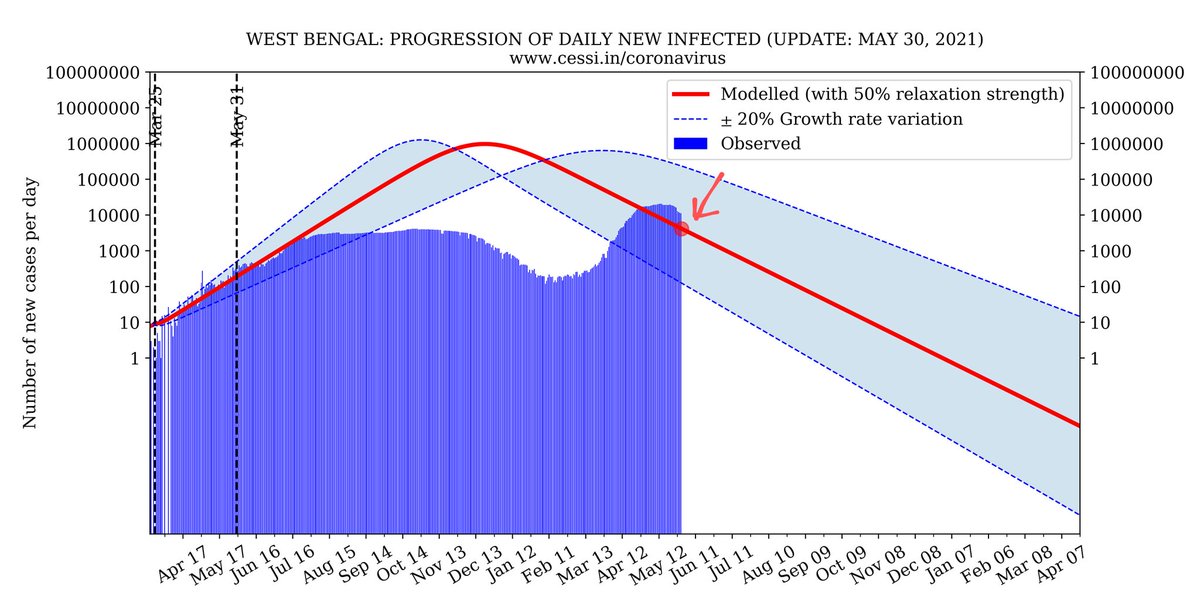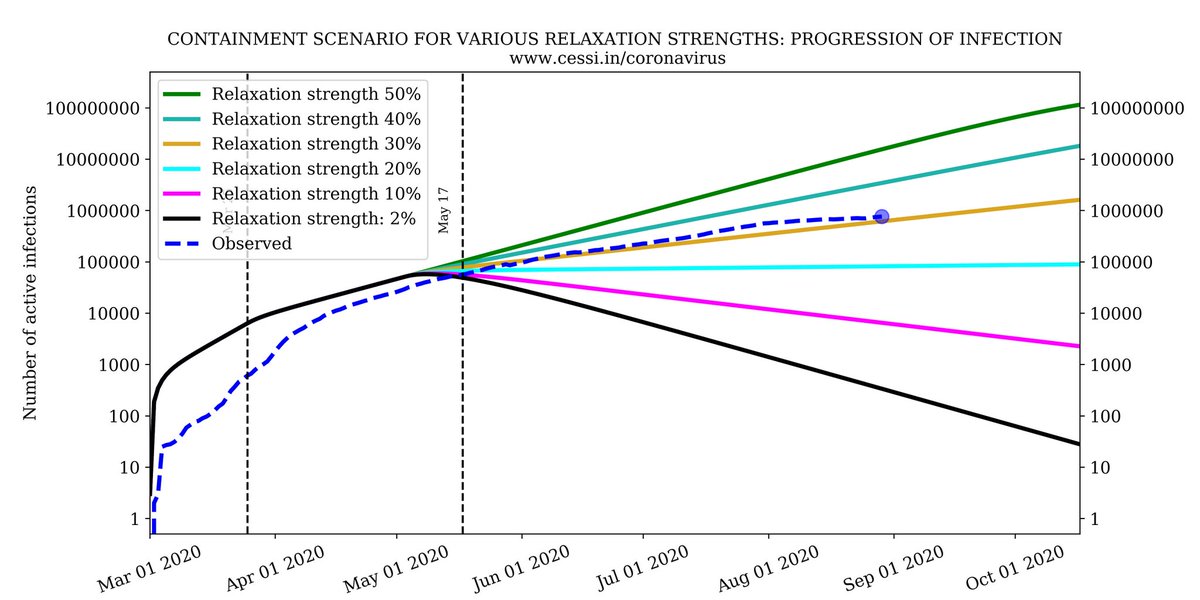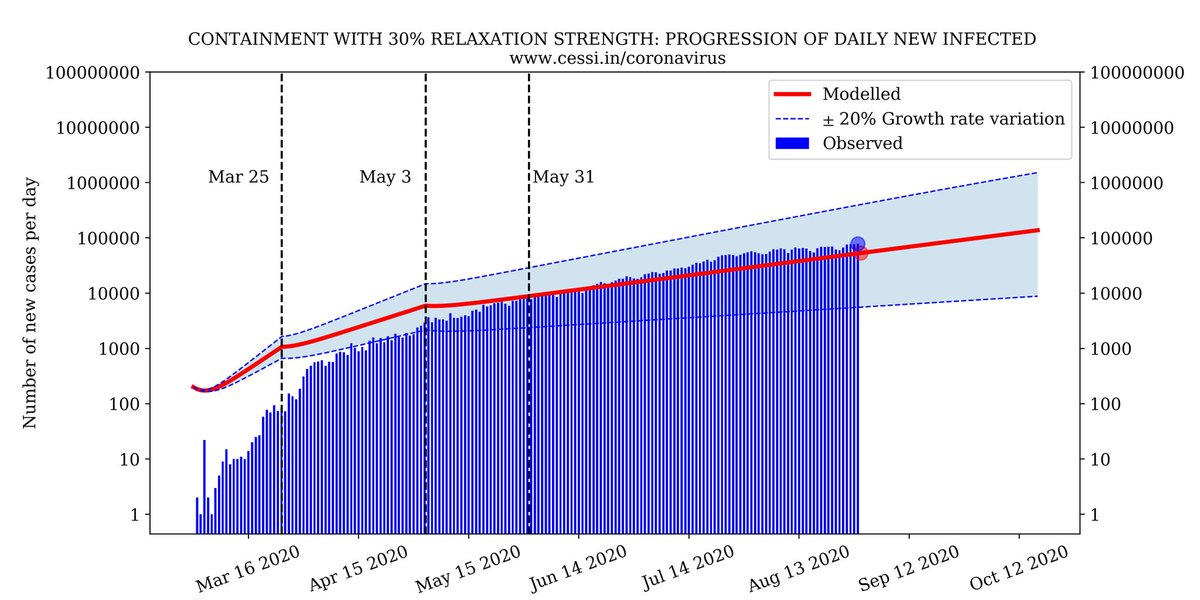
While it's great to see the debate over solar cycle predictions and #SunspotCycle25 feature in the @nytimes it is unfortunate that the story leaves an impression of a lack of consensus/physics-based understanding. Thread 👇🏾1/n
@NYTScience #SpaceWeather #SunspotCycle25
@NYTScience #SpaceWeather #SunspotCycle25
https://twitter.com/NYTScience/status/1398855554215432199
First, the story by @overbye nicely connects understanding Sun's magnetism with exploration of other active stars and #exoplanets, wherein stellar activity influences conditions suitable for hosting life. It describes well how solar storms create #spaceweather impacting us 2/n 

But there are many issues that are misleading or sometimes simply incorrect. It says "A new cycle of storms will begin any day now". Well, #SolarCycle25 has already begun in late 2019. An early report on this is already published. See 👇🏾3/n
doi.org/10.3847/2515-5…
doi.org/10.3847/2515-5…

It says upfront that "The sun may be about to set records for sunspot numbers and violent storms, or it may be sliding into a decline like the Maunder Minimum, from 1645 to 1715, when hardly any sunspots appeared — a period that became known in Europe as the Little Ice Age." 4/n
However, this statement ignores published research - based on firm physical foundations of solar dynamo theory - which indicates a weak solar cycle 25 but no possibility of #MaunderMinimum like conditions over this decade. See 👇🏾5/n
doi.org/10.1038/s41467…
doi.org/10.1038/s41467…
It says "Last year, a committee of scientists from NASA and the National Oceanic and Atmospheric Administration forecast that the coming cycle would be similarly anemic, with a peak in 2025 of about 115 sunspots.". This Committee actually however relies on other forecasts. 6/n
The @NWSSWPC @NASASun panel does not do its own scientific calculation for solar activity. It critically assesses scientific prediction work from around the world in creating a consensus forecast statement. Let's not take away credit from the hard work of others! 7/n
That would be a disservice to both the @NASA @NWSSWPC panel members and those who have toiled over years to gain a physical understanding of the Sun's activity and make serious physics-based forecasts. 8/n
Finally, in order to justify the "radical" statistical/empirical forecast by @swmcintosh
@leamonrj, quotes such as these are included
“In my experience, when people really understand something, they can explain it simply,” he said....9/n
@leamonrj, quotes such as these are included
“In my experience, when people really understand something, they can explain it simply,” he said....9/n
“It is striking to me that almost no one in the solar-cycle prediction business can explain their favorite dynamo model in a way that lay people can ‘get it.’".
I believe this opinion is flawed. Correct ≠ simple, complex ≠ wrong 🤓10/n
I believe this opinion is flawed. Correct ≠ simple, complex ≠ wrong 🤓10/n
And you just have to keep your eyes open for lucid explanations of our current understanding of the solar activity cycle. Here's one by @slyardley that I highly recommend 11/n 



The solar convection zone where the #SolarCycle is born *is* complex; random fluctuations due to turbulent convective plasma motions, non-linear processes, lack of detailed observational constraints make physics-based understanding challenging. 12/n 

The line that the story in @nytimes takes to apparently justify this radical forecast of a historical strong cycle seems to propagate the view that we don't understand much - and so - anything goes. That's quite misleading. 13/n
Here's a review I wrote in #SolarPhysics on predictions of #SunspotCycle25 summarising progress in our understanding of the Sun's activity and demonstrating physics-based predictions have converged on a weak #SolarCycle25
@SpringerNature @livrev_lrsp 14/n doi.org/10.1007/s11207…

@SpringerNature @livrev_lrsp 14/n doi.org/10.1007/s11207…


I am not positing that we should not highlight diverging scientific views; we should absolutely be supportive of these. But when radical statistical-empirical work is positioned by unfairly diminishing other physics-based approaches that raises serious concerns. 15/n
Let me turn that analogy of an Elephant in the story inside out and say that you cannot understand how an Elephant behaves and functions by scratching its surface. You need to understand how its brain and physiology functions! "What is essential is invisible to the eye". 16/n 

The story of the #sunspot cycle does not end with the pairs of lovely sunspots that appear and disappear on the Sun's surface. It does not end in the bands of sunspots that march across the Sun's surface every 11 years. It *begins* there. Read: *Physics cannot be ignored* 17/n
Physics has been unfairly sacrificed here at the altar of sensationalism, bodies of work ignored and summarily dismissed in quotesbecause they did not add up with the story. That's fine, every one can express their opinion, and I have felt the need to point out mine. 18/n
I feel strongly about this because there have been sustained attempts by some to purposely diminish advances in physics-based progress in solar cycle predictions to justify the more easy statistical-empirical solar cycle forecasting industry. This is not good for the field. 19/n
This is an injustice to years of efforts by solar dynamo theorists and magnetohydrodynamic modelers like us who are working in a very complex subject. Years of efforts and hard work does make us right; it is just a honest scientific path towards progress. 20/n
One expects an article in @NYTScience to be nuanced and balanced in the views it propagates. One expects so called experts to be not dismissive (in their quotes) of progress in a field made by others - scientists and students from around the world 21/n
And we have made progress!!! I humbly invite you to read this review (see below), critically discuss this in journal clubs and within your research groups so that you know of the beautiful physics of solar cycle predictions and make up your own minds. 22/n
doi.org/10.1007/s11207…
doi.org/10.1007/s11207…
I bring these views to your attention with the hope that if you see merit in the broad philosophy of my arguments, you shall share and discuss these within your circles. To the Sun, and beyond! 23/n 

@MPSGoettingen @cessi_iiserkol @SolarDurham @solar_group_NU @helen_hm11 @slyardley @erikapal @halocme @mathewjowens @markcheung @mayukh_panja @hotta_hideyuki @SolarPapers @Dr_Lucie @louiseharra @UKSolarPhysics @egu_st @Solar_EPS @dktripathi @dipu_iia @SolarDynamo @astrosushant
• • •
Missing some Tweet in this thread? You can try to
force a refresh










